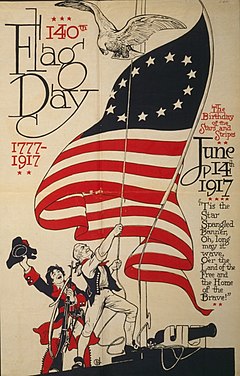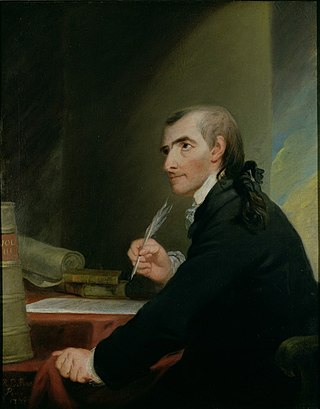
Francis Hopkinson was an American Founding Father, lawyer, jurist, author, and composer. He designed Continental paper money and two early versions of flags, one for the United States and one for the United States Navy. He was a signer of the Declaration of Independence in July 1776 as a delegate from New Jersey.

The national flag of the United States, often referred to as the American flag or the U.S. flag, consists of thirteen equal horizontal stripes of red alternating with white, with a blue rectangle in the canton, referred to as the union and bearing fifty small, white, five-pointed stars arranged in nine offset horizontal rows, where rows of six stars alternate with rows of five stars. The 50 stars on the flag represent the 50 U.S. states, and the 13 stripes represent the thirteen British colonies that declared independence from Great Britain, which they obtained in their victory in the American Revolutionary War.
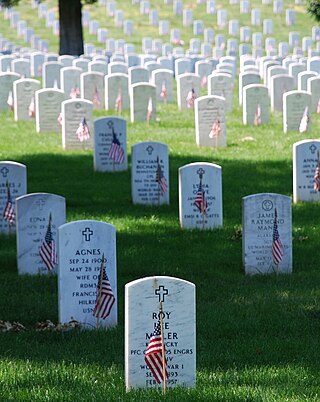
Memorial Day is a federal holiday in the United States for honoring and mourning the U.S. military personnel who died while serving in the United States Armed Forces. From 1868 to 1970, it was observed on May 30. Since 1971, it is observed on the last Monday of May.

Juneteenth is a federal holiday in the United States commemorating the ending of slavery in the United States. Its name is a portmanteau of the words "June" and "nineteenth", as it is celebrated on the anniversary of June 19, 1865, when as the American Civil War was ending, Major General Gordon Granger ordered the final enforcement of the Emancipation Proclamation in Texas. Originating in Galveston, Juneteenth has since been observed annually in various parts of the United States, often broadly celebrating African-American culture.
Loyalty Day is observed on May 1 in the United States. It is a day set aside "for the reaffirmation of loyalty to the United States and for the recognition of the heritage of American freedom". The date, May 1, was set in order to counter International Workers' Day, and was recognized by the U.S. Congress during the height of the Second Red Scare.

Casimir Pulaski Day is a local holiday officially observed in Illinois, on the first Monday of March in memory of Casimir Pulaski, a Revolutionary War cavalry officer born in Poland as Kazimierz Pułaski. He is praised for his contributions to the U.S. military in the American Revolution and known as "the father of the American cavalry".
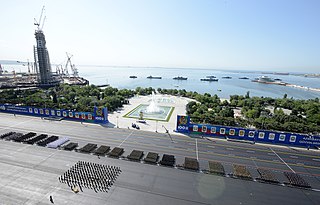
Many nations around the world observe some kind of Armed Forces Day to honor their military forces. This day is not to be confused with Veterans Day or Memorial Day.

Independence Day, known colloquially as the Fourth of July, is a federal holiday in the United States commemorating the Declaration of Independence, which was ratified by the Second Continental Congress on July 4, 1776, establishing the United States of America.

United Nations Day is an annual commemorative day, reflecting the official creation of the United Nations on 24 October 1945. In 1947, the United Nations General Assembly declared 24 October, the anniversary of the Charter of the United Nations, to "be devoted to making known to the people of the world the aims and achievements of the United Nations and to gaining their support for" its work.
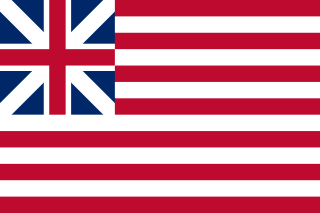
The "Grand Union Flag", or the "Continental Colors", also known as the "Congress Flag", the "Cambridge Flag", and the "First Navy Ensign", was the first, unofficial national flag of the United States of America. First hoisted on December 3, 1775 by naval officer John Paul Jones, the flag was used heavily by the Second Continental Congress of the United States, and by George Washington, commander-in-chief of the Continental Army during the American Revolutionary War.

Mother's Day is an annual holiday celebrated in the United States on the second Sunday in May. Mother's Day recognizes mothers, motherhood and maternal bonds in general, as well as their positive contributions to their families and society. It was established by Anna Jarvis, with the first official Mother's Day celebrated through a service of worship at St. Andrew's Methodist Church in Grafton, West Virginia, on May 10, 1908. Popular observances include holiday card and gift giving, churchgoing often accompanied by the distribution of carnations, and family dinners. In the United States, Mother's Day complements similar celebrations honoring family members, such as Father's Day, Siblings Day and Grandparents Day.
The National Day of Prayer is an annual day of observance designated by the United States Congress and held on the first Thursday of May, when people are asked "to turn to God in prayer and meditation". The president is required by law to sign a proclamation each year, encouraging all Americans to pray on this day.

General Pulaski Memorial Day is a United States public holiday in honor of General Kazimierz Pułaski, a Polish hero of the American Revolution. This holiday is held every year on October 11 by Presidential Proclamation, to commemorate his death from wounds suffered at the siege of Savannah on October 9, 1779, and to honor the heritage of Polish Americans. The observance was established in 1929 when Congress passed a resolution designating October 11 as General Pulaski Memorial Day. Every President has issued a proclamation for the observance annually since.
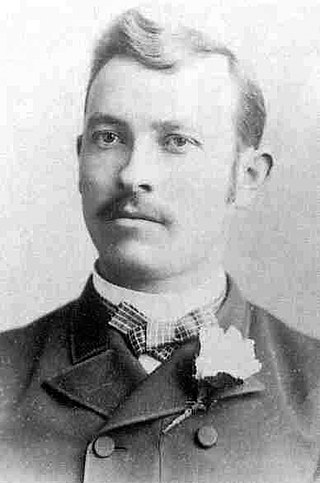
Bernard John Cigrand, a dentist, has a strong claim to being considered the father of Flag Day in the United States.

Thanksgiving is a federal holiday in the United States celebrated on the fourth Thursday of November. It is sometimes called American Thanksgiving to distinguish it from the Canadian holiday of the same name and related celebrations in other regions. It originated as a day of thanksgiving and harvest festival, with the theme of the holiday revolving around giving thanks and the centerpiece of celebrations remaining a Thanksgiving dinner. The dinner traditionally consists of foods indigenous to the Americas: turkey, potatoes, squash, corn (maize), green beans, cranberries, and pumpkin pie. Other Thanksgiving customs include charitable organizations offering thanksgiving dinner for the poor, attending religious services, and watching television events such as Macy's Thanksgiving Day Parade and America's Thanksgiving Parade as well as NFL football games. Thanksgiving is regarded as the beginning of the holiday season, with the day following it, Black Friday, said to be the busiest shopping day of the year in the United States.

Thanksgiving is a national holiday celebrated on various dates in October and November in the United States, Canada, Saint Lucia, Liberia, and unofficially in countries like Brazil, Germany and the Philippines. It is also observed in the Dutch town of Leiden and the Australian territory of Norfolk Island. It began as a day of giving thanks for the blessings of the harvest and of the preceding year. Various similarly named harvest festival holidays occur throughout the world during autumn. Although Thanksgiving has historical roots in religious and cultural traditions, it has long been celebrated as a secular holiday as well.
The following are minor or locally celebrated holidays related to the American Revolution.

Presidents' Day, officially Washington's Birthday at the federal governmental level, is a holiday in the United States celebrated on the third Monday of February. It is often celebrated to honor all those who served as presidents of the United States and, since 1879, has been the federal holiday honoring Founding Father George Washington, who led the Continental Army to victory in the American Revolutionary War, presided at the Constitutional Convention of 1787, and was the first U.S. president.

Saint Patrick's Day, although a legal holiday only in Savannah, Georgia, and Suffolk County, Massachusetts, is nonetheless widely recognized and celebrated throughout the United States. It is primarily celebrated as a recognition of Irish and Irish American culture; celebrations include prominent displays of the color green, eating and drinking, religious observances, and numerous parades. The holiday has been celebrated in what is now the U.S. since 1601.

The Stony Hill School is a one-room school where on June 14, 1885, the teacher and his students held the first observance of "Flag Birth Day." For this, the site was added to the National Register of Historic Places in 1976.
